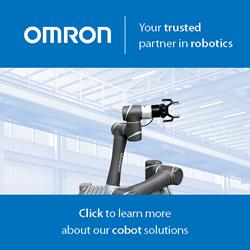Objet260 Connex At WIRED 2011
World's First Spherical Flying Machine
Working Hand In Hand Without Interruption
Odos Imaging 2+3D Sensor
Robotic Palletizers Paint a Picture of Efficiency
How Google's Self-Driving Car Works
IROS 2011 Montage
Lean Logistics: Goodyear's Automated Warehouse Puts Customers on Top
A Robot Playing Jenga
UCSD's Switchblade Robot
Autom Available For Pre-Order
Gantry Robots and the Case for Automation
Microsoft Robotics Developer Studio 4 Beta Available For Download
Giving Artificial Hands a Sense of Touch
"ROS (Robotic Operating Systems) Everywhere!" says Willow Garage's Steve Cousins
Records 3496 to 3510 of 3562
First | Previous | Next | Last
Featured Product

